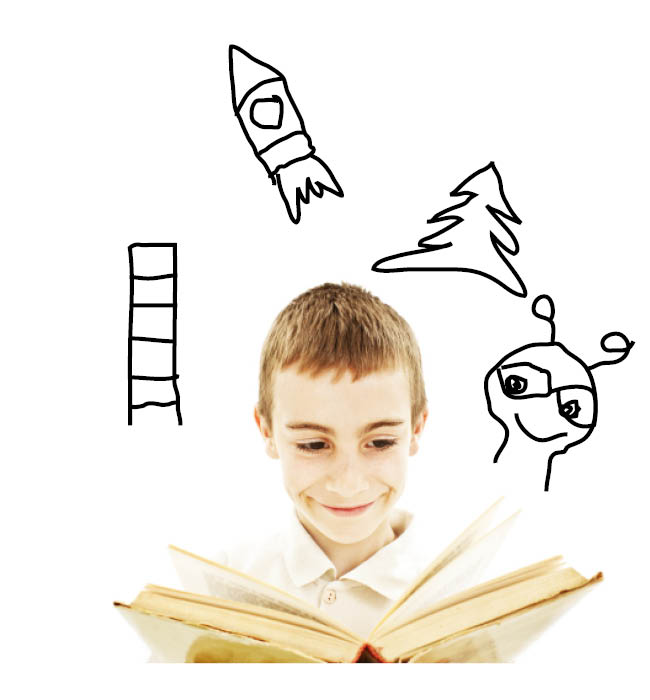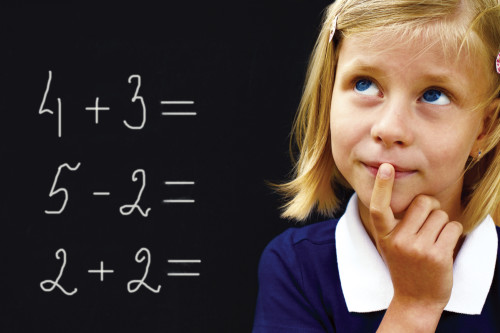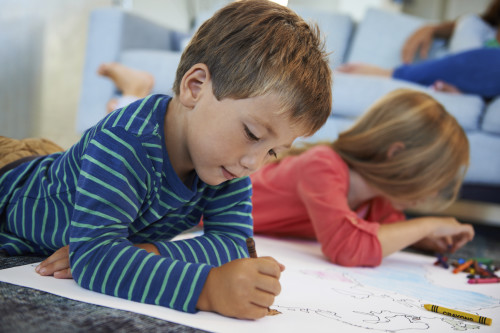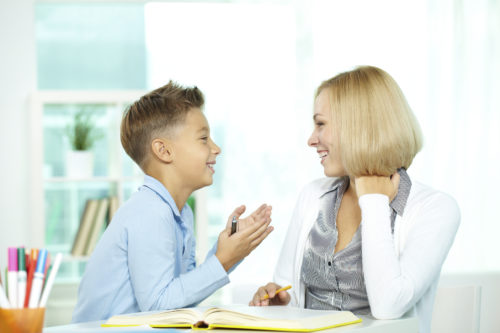Reading
Many children who dislike and/or struggle with reading problems actually face underlying functional vision issues.
Poor visual abilities make it very difficult to recognize words, even when our brains understand what the word means—and even if we just saw the same word a few lines earlier.
This is incredibly frustrating for aspiring readers, and it’s also frustrating for their parents.
“I know she is smart,” they say. “She just won’t read!”
What’s Really Going On
Instead of being able to recognize a word and pull it from our memory, a child with visual learning problems—specifically, lack of mastery over eye movement skills and visual dominance—has to attempt to decipher nearly every word, one by one.
It’s no wonder then, that these children grow discouraged and dismiss reading as a complicated task of word decoding instead of an enjoyable activity.

Teachers and parents insist that the child try to read, but what they don’t know is since the child doesn’t have the skills necessary to read using his or her visual system, the child adapts to reading in other ways. Many children with reading problems learn to read using compensations like their auditory (hearing) systems, which is significantly less efficient.
If you or I found reading to be this inefficient and frustrating, we probably wouldn’t want to do it, either.

Many children who dislike and/or struggle with reading problems actually face underlying functional vision issues.
Poor visual abilities make it very difficult to recognize words, even when our brains understand what the word means—and even if we just saw the same word a few lines earlier.
This is incredibly frustrating for aspiring readers, and it’s also frustrating for their parents.
“I know she is smart,” they say. “She just won’t read!”
What’s Really Going On
Instead of being able to recognize a word and pull it from our memory, a child with visual learning problems—specifically, lack of mastery over eye movement skills and visual dominance—has to attempt to decipher nearly every word, one by one.
It’s no wonder then, that these children grow discouraged and dismiss reading as a complicated task of word decoding instead of an enjoyable activity.
Teachers and parents insist that the child try to read, but what they don’t know is since the child doesn’t have the skills necessary to read using his or her visual system, the child adapts to reading in other ways. Many children with this problem learn to read using compensations like their auditory (hearing) systems, which is significantly less efficient.
If you or I found reading to be this inefficient and frustrating, we probably wouldn’t want to do it, either.
Essential skills necessary for effective reading
Essential skills include:
- Good eye movement skills
- The ability to visually recognize words
- Visualization or visual imagery
Decoding doesn’t fall anywhere on this list. And, yet, you’ll recall that’s what children with poor visual skills are stuck trying to do.
Authentic reading stops when phonetic decoding begins.
Why? Because, when reading, the goal is to obtain an understanding of the subject. You want to be able to create a picture in your mind based on whatever you’re reading. In order to do so, you first have to be able to recognize the words that you read, using visual memory.
The following paragraph illustrates this point:


Essential skills include:
- Good eye movement skills
- The ability to visually recognize words
- Visualization or visual imagery
Decoding doesn’t fall anywhere on this list. And, yet, you’ll recall that’s what children with poor visual skills are stuck trying to do.
Authentic reading stops when phonetic decoding begins.
Why? Because, when reading, the goal is to obtain an understanding of the subject. You want to be able to create a picture in your mind based on whatever you’re reading. In order to do so, you first have to be able to recognize the words that you read, using visual memory.
The following paragraph illustrates this point:
Can you read this paragraph?
Aoccdrnig to a rscheearch at an Elingsh uinervtisy, the oredr of ltteers in wrods deosn’t mttaer, the olny iprmoetnt tihng is taht the frist and lsat ltteers are proeprly pclaed. The rset can be uot of oredr and you can sitll raed it wouthit porbelm. Tihs is bcuseae we do not raed by sonuding out ervey lteter but by recgoinzing the wrods as visaul wlohes.
A strong reader is able to read this paragraph fairly easily for three important reasons:
1. Phonic decoding is clearly not highly involved. If phonetic decoding was necessary for word recognition as most people seem to believe, you would not be able to read this paragraph. You’d be tripped up by trying to process each word based on the sequence of letters, rather than looking at the word as a whole and understanding what it represents.
2. As stated in the paragraph, visual recognition of whole words with particular emphasis on the beginning and end of the word is the primary word-recognition method used by strong readers.
3. Reading fluency depends on our ability to predict what will come next based on the context of the paragraph. Fluency, speed, and reading comprehension typically increase as understanding of the paragraph’s content increases.
What Vision Therapy Can Do
In order to solve reading problems, the root visual problems must be solved.
MVTC uses a combination of behavioral optometric vision therapy and visual learning to solve these root problems.
Vision therapy corrects poor eye movement skills and begins work on visual imagery and visual dominance. Visual Learning (VL) completes the establishment of good visualization and visual dominance (relying on less efficient sensory systems in lieu of our visual system) and then teaches a child how to learn visually. When a child has established good eye movement skills and visualization abilities, reading is reintroduced using the new and more efficient visual approach.
The ability to read efficiently opens up innumerable doors. Vision is the dominant cognitive system in humans, and once the visual system is working properly, it’s very easy to use. Good vision opens up the doors to learning and reading, and that opens up more doors than we can count.


What Vision Therapy Can Do
In order to solve reading problems, the root visual problems must be solved.
MVTC uses a combination of behavioral optometric vision therapy and visual learning.
Vision therapy corrects poor eye movement skills and begins work on visual imagery and visual dominance. Visual Learning (VL) completes the establishment of good visualization and visual dominance and then teaches a child how to learn visually. When a child has established good eye movement skills and visualization abilities, reading is reintroduced using the new and more efficient visual approach.
The ability to read efficiently opens up innumerable doors. Vision is the dominant cognitive system in humans, and once the visual system is working properly, it’s very easy to use. Good vision opens up the doors to learning and reading, and that opens up more doors than we can count.




